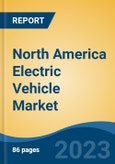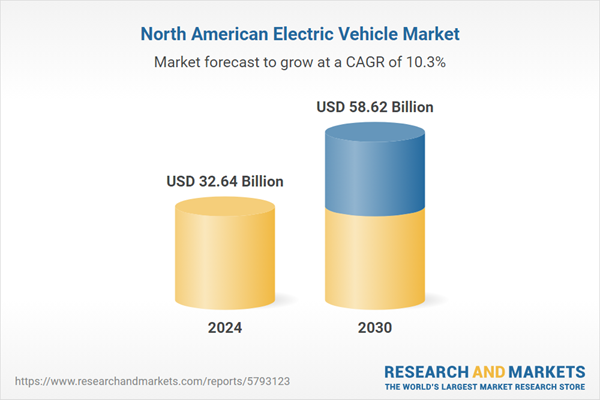Speak directly to the analyst to clarify any post sales queries you may have.
10% Free customizationThis report comes with 10% free customization, enabling you to add data that meets your specific business needs.
Environmental mandates and technology advances sustain momentum for electric mobility across North America. The U.S. Department of Energy highlights rapid expansion in public charging infrastructure, counting over 173,000 public ports by 2024. Rising consumer awareness and policy-driven emission targets compel shifts toward electrified fleets. Falling battery pack costs, tracked by the U.S. Energy Information Administration at an average of USD 132 per kWh in 2024, expand access to EV ownership across segments. Meanwhile, battery mineral supply constraints from soaring global lithium demand reported by the International Energy Agency pressure automakers to secure resilient supply chains.
Automotive manufacturers face pressing needs to balance affordability with innovation. The Bureau of Economic Analysis documented U.S. EV sales topping 1.6 million units in 2024, reflecting steady mainstream adoption. However, as charging networks grow, vehicle-grid integration emerges as a crucial trend for grid stability. Environmental and Climate Change Canada cites transportation as a primary emissions source, spurring policies aimed at net-zero targets and intensifying investments in alternative powertrains. The shift also impacts allied industries like power generation and battery recycling, unlocking avenues for cross-sector collaborations.
Market Drivers
Government Regulations Promoting Clean Mobility
Policies like the U.S. Zero-Emission Vehicle standards and Canada’s 2035 net-zero targets accelerate EV deployment by setting firm deadlines for phasing out combustion engines. Incentives lower upfront costs, driving consumers and fleets toward electric options. According to Environment and Climate Change Canada, transportation generates significant emissions, making electrification a strategic priority. Legislated goals attract private investments and create certainty in planning. Tax credits, rebates, and infrastructure grants reduce barriers to ownership, cultivating steady market growth. Regulations also encourage manufacturers to innovate rapidly, further enhancing EV performance and affordability, which collectively fosters a competitive landscape.Key Market Challenges
Critical Mineral Supply Constraints
The International Energy Agency reports a 31% jump in global lithium demand in 2023, fueling concerns about supply chain stability for key battery minerals. Limited production capacity, geopolitical risks, and environmental considerations complicate resource access. Processing bottlenecks heighten cost volatility, impacting vehicle affordability. Automakers seek diversification strategies, but alternative sourcing or recycling solutions remain underdeveloped. Supply insecurities slow production schedules, hinder scaling efforts, and elevate investment risks. Without reliable mineral flows, ambitious electrification timelines face delays. Balancing sustainability with mining expansion adds complexity, posing a persistent challenge for the EV ecosystem.Key Market Trends
Battery Technology Innovations
Development of solid-state batteries promises greater energy density, faster charging, and improved safety. The U.S. Department of Energy funds research into advanced chemistries to reduce reliance on scarce materials. New designs aim to minimize thermal risks and extend battery life cycles. As lab breakthroughs transition toward commercial viability, manufacturers prepare for significant cost and performance gains. Innovations enable longer driving ranges and lighter vehicles, crucial for mainstream adoption. These advances also unlock applications in heavier vehicles and commercial fleets. Battery technology remains a pivotal frontier shaping future EV competitiveness and sustainability.Key Market Players
- AB Volvo
- BMW Group
- BYD Company Ltd.
- Daimler AG
- Ford Motor Company
- General Motors Company
- Honda Motor Co., Ltd.
- Hyundai Motor Company
- Tesla, Inc.
- Volkswagen AG
Report Scope:
In this report, the North America Electric Vehicle Market has been segmented into the following categories, in addition to the industry trends which have also been detailed below:North America Electric Vehicle Market, By Vehicle:
- Two-Wheeler
- Passenger Car
- Light Commercial Vehicle
- Medium & Heavy Commercial Vehicle
- OTR
North America Electric Vehicle Market, By Propulsion:
- Battery Electric Vehicle (BEV)
- Fuel Cell Electric Vehicle (FCEV)
- Plug-in Hybrid Electric Vehicle (PHEV)
North America Electric Vehicle Market, By Range:
- 0-50 Miles
- 51-150 Miles
- 151-200 Miles
- 201-400 Miles
- Above 400 Miles
North America Electric Vehicle Market, By Country:
- United States
- Canada
- Mexico
Competitive Landscape
Company Profiles: Detailed analysis of the major companies present in the North America Electric Vehicle Market.Available Customizations:
North America Electric Vehicle Market report with the given market data, TechSci Research, offers customizations according to the company’s specific needs. The following customization options are available for the report.Company Information
- Detailed analysis and profiling of additional market players (up to five).
Table of Contents
Companies Mentioned
- AB Volvo
- BMW Group
- BYD Company Ltd.
- Daimler AG
- Ford Motor Company
- General Motors Company
- Honda Motor Co., Ltd.
- Hyundai Motor Company
- Tesla, Inc.
- Volkswagen AG
Table Information
| Report Attribute | Details |
|---|---|
| No. of Pages | 130 |
| Published | August 2025 |
| Forecast Period | 2024 - 2030 |
| Estimated Market Value ( USD | $ 32.64 Billion |
| Forecasted Market Value ( USD | $ 58.62 Billion |
| Compound Annual Growth Rate | 10.2% |
| Regions Covered | North America |
| No. of Companies Mentioned | 10 |









